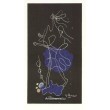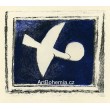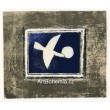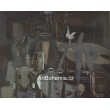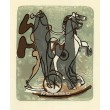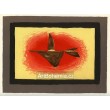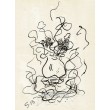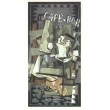Košík
0
x
Produkty
(prázdný)
Žádné díla
Bude determinováno
Dopravné a balné
0 Kč
Celkem
Produkt byl úspěšně přidán do nákupního košíku
Počet
Celkem
0 ks zboží.
1 dílo v košíku.
Za díla:
Doručení a balné:
Bude determinováno
Celkem
Kategorie
- grafiky/tisky
- obrazy
- kresby
- plakáty
- fotografie
- exlibris
- bibliofilie
- knihy/katalogy
- starožitnosti
- sochy/plastiky
- sklo
-
Hnutí
- abstrakce
- art-deco
- čs.avantgarda/moderna
- expresionismus
- fauvismus
- impresionismus
- kubismus
- naivní umění
- op-art
- poetismus
- pop-art
- realismus
- secese
- sociální kritika
- soudobá tvorba
- surrealismus
- světová avantgarda/moderna
- Škola prof. Albína Brunovského
- Škola prof. Zdeňka Sklenáře
- Škola prof.Julia Mařáka - mařákovci
- Žánr
- Zprávy/NEWS
- Doporučujeme
-

Jacqueline (17.5.1958)
11 616 Kč -60% 29 040 Kč
Hnutí
- abstrakce
- art-deco
- čs.avantgarda/moderna
- expresionismus
- fauvismus
- impresionismus
- kubismus
- naivní umění
- op-art
- poetismus
- pop-art
- realismus
- secese
- sociální kritika
- soudobá tvorba
- surrealismus
- světová avantgarda/moderna
- Škola prof. Albína Brunovského
- Škola prof. Zdeňka Sklenáře
- Škola prof.Julia Mařáka - mařákovci
Žánr
NEJŽÁDANĚJŠÍ UMĚLCI
- Anderle Jiří
- Augustovič Peter
- Benca Igor
- Beneš Karel
- Bím Tomáš
- Born Adolf
- Brun Robert
- Brunovský Albín
- Boštík Václav
- Bouda Cyril
- Bouda Jiří
- Braque Georges
- Brázda Jiří
- Buffet Bernard
- Cézanne Paul
- Čapek Josef
- Čápová Hana
- Dalí Salvador
- Demel Karel
- Dudek Josef
- Dufy Raoul
- Effel Jean
- Felix Karol
- Filla Emil
- Giacometti Alberto
- Grosz George
- Chagall Marc
- Istler Josef
- Janeček Ota
- Jiřincová Ludmila
- Kandinsky Wassily
- Kĺúčik Peter
- Komárek Vladimír
- Kulhánek Oldřich
- Kupka František
- Lada Josef
- Lhoták Kamil
- Matisse Henri
- Miró Joan
- Mucha Alfons
- Muzika František
- Picasso Pablo
- Pileček Jindřich
- Reynek Bohuslav
- Sukdolák Pavel
- Suchánek Vladimír
- Svolinský Karel
- Šíma Josef
- Špála Václav
- Švabinský Max
- Švengsbír Jiří
- Tichý František
- Toulouse-Lautrec Henri de
- Toyen
- Trnka Jiří
- Váchal Josef
- Vik Karel
- Warhol Andy
- Zábranský Vlastimil
- Zoubek Olbram
- Zrzavý Jan
Seznam děl umělce Braque Georges
Braque Georges (brak), *1882, fr. malíř, jeden z předních kubistů. Po svém otci, dovedném lakýrníkovi, zdědil smysl pro technickou dokonalost práce a uchoval si jej i tehdy, když pokročil od malířského řemesla k vysokým uměleckým cílům. Ve dvaceti letech
Braque Georges (brak), *1882, fr. malíř, jeden z předních kubistů. Po svém otci, dovedném lakýrníkovi, zdědil smysl pro technickou dokonalost práce a uchoval si jej i tehdy, když pokročil od malířského řemesla k vysokým uměleckým cílům. Ve dvaceti letech se připojil k tehdejšímu úsilí fauvistů (viz * Fauvismus), kteří se stavěli proti impresionismu a neoimpresionismu. Nebyl však uspokojen jejich hledáním. Ani fauvismus totiž nemínil opustit vnější skutečnost, i když zdůrazňoval práva tvůrcova. [Braque Georges] se tehdy připojil k Cézanneovu architektonickému úsilí, které uplatňuje v obraze geometrii. Učil se také na primitivním umění, hl. na negerské plastice. Od těchto začátků postoupil ke snaze vytvořit čistě výtvarnými prostředky obraz jako samostatný lyrický fakt. Staví koncepci statického díla proti impresionistickému a fauvistickému dynamismu. Po válce se odchýlil od této přísné linie k methodě, která by se mohla nazvat synthetickým kubismem. Zátiší, figurální obrazy, akty jeho robustních žen, nejsou již pak rozloženy analysou na rozdíl od dřívějších obrazů geometrisovaných v plochu. Výtvarnost se v nich váže na předmět. Ale jeho výrok o pravidle, jež má korigovati emoci, platí i zde. Z ceněných [Braque Georges]-ových obrazů má Mod. galerie pražská jedno zátiší. - Lit. M. Raynal, G. [Braque Georges] 1921, Vincenc Kramář, Kubismus 1921, E. Faure, Dějiny umění, IV. sv. (přel. O. T. Kunstovný 1929). K-a.
(In: Ottův slovník naučný nové doby)
(1882-1963) Francouzský malíř; jeho otec byl malířem dekorací. Navštěvoval večerní kurs na umělecké škole v Le Havru a rok se učil natěračem, než 1900 odjel do Paříže, aby se věnoval umění. Bydlel na Montmartru a chodil do večerního kursu kreslení. 1902—4 studoval na Académie Humbert, dva měsíce na École des Beaux-Arts. Spřátelil se s M. Laurencinovou a F. Picabiou. V Louvru ho zaujalo zejména řecké a egyptské sochařství, u Durand-Ruda poznal malbu impresionistů a post-impresionistů (C. Monet, A. Renoir, P. Cézanne, G. Seurat, V. van Gogh), jež ovlivnila jeho první obrazy. 1903 se prostřednictvím svých krajanů R. Dufyho a O. Friesse seznámil se skupinou fauvistů. Na podzim 1906 maloval v L‘Estaque u Marseille.
1907 vystavil v Salónu nezávislých šest fauvistických obrazů; na Podzimním salóně se seznámil s G. Apollinairem, jenž ho uvedl do Picassova ateliéru, kde viděl nedokončený obraz Slečny z Avignonu. 1908 maloval s Dufym v L‘Estaque; v obraze Stromy u L‘Estaque poprvé přetvářel přírodní předměty do geometrických forem. Když jury Podzimního salónu odmítla pět ze sedmi Braqueových obrazů, vystavil celý soubor v Kahnweilerově galerii. Když kritik L. Vauzcelles užil v odsuzující kritice Braqueových obrazů, vystavených 1909 v Salónu nezávislých, slov „kubické bizarnosti“, dal podnět ke vzniku názvu nového uměleckého směru. Až do první světové války spolupracoval Braque úzce s Picassem; společně, ve vzájemném ovlivňování, prošli obdobím analytického (1909-12) a syntetického kubismu (1912-14); Braqueovým přínosem bylo imitování textury dřeva a použití sádry v obraze. 1912 vytvořil Braque první koláž, Mísu ovoce. 1914 byl Braque odveden na frontu, kde byl 1915 těžce raněn do hlavy; podrobil se trepanaci, ale po propuštění do civilu se mohl vrátit k malování teprve 1917. 1922 vystavil na Podzimním salónu v samostatné místnosti 18 obrazů a všechny se mu podařilo prodat. Místo s Picassem se stýká s J. Grisem a sochařem H. Laurensem. 1923—25 navrhoval kostýmy a výpravy pro Ďagilevův Ruský balet. 1932 provedl ilustrace Hesiodovy Theogonie pro Vollarda. V třicátých letech prošel obdobím neoklasicismu. 1948 vyšla sbírka Braqueových aforismů a litografií Cahier de Georges Braque. V pozdních obrazech Ateliérů z padesátých let se jako hlavní motiv objevuje bílý pták. 1953 provedl nástropní malbu v Etruské galerii v Louvru, 1954 dokončil vitráže v kostele ve Varengeville u Dieppe.
Braque byl spolu s Picassem zakladatelem a nejvýznamnějším představitelem kubismu. Braque stál dlouho ve stínu Picassovy slávy; jednou z příčin byla jeho zdrženlivá povaha, jež mu ani nedovolila účastnit se života uměleckých skupin. Teprve po druhé světové válce začal být oceňován jako jeden z největších moderních malířů. Proti Picassovi s jeho výbušným španělským temperamentem ztělesňuje Braque ctnosti francouzského ducha: racionalismus, uměřenost, harmonii. Ty se projevují ve všech jeho obdobích v přísné a dokonale vyvážené kompozici, zdrženlivé a noblesní barevnosti a kultivovanosti malířského přednesu. Své záměry neuskutečňoval geniálními výpady, ale soustředěnou vytrvalostí. Většinu svých nejranějších impresionistických děl později sám zničil. Braqueovy fauvistické obrazy se na rozdíl od ostatních malířů vyznačují lomenými barvami, z nichž převládá fialová a růžová. V období analytického kubismu podobně jako Picasso používal bohaté škály šedých a hnědých, jimiž usiloval vyjádřit přesné prostorové vztahy; hlavními tématy byly zátiší a figura (Muž s kytarou, Muž s houslemi, oba 1911). V období syntetického kubismu spojoval v abstraktní kompozici reálné a namalované předměty (Žena s kytarou, 1913 a Hudební formy, 1918). Téma zátiší tvořilo osu i jeho poválečného období; za druhé světové války vytvořil cyklus Kulečníků. Syntézu celého dosavadního Braqueova vývoje tvoří jeho pozdní kompozice s bílým ptákem, v nichž dosáhl nové harmonie předmětných i abstraktních forem s obrazovým prostorem.
Vyňato z Encyklopedie světového malířství - Autorský kolektiv pod vedením PhDr. Sávy Šabouka DrSc.; nakl. Academia ČSAV 1975.
In: http://www.artchiv.cz/show.php3?action=explore_bio&id=113&session=04nd10r10y07h53t2006
Georges Braque was born on May 13, 1882, in Argenteuil-sur-Seine, France. Georges Braque grew up in Le Havre and studied evenings at the Ecole des Beaux-Arts there from about 1897 to 1899. Braque left for Paris to study under a master decorator to receive his craftsman certificate in 1901. From 1902 to 1904, Braque painted at the Académie Humbert in Paris, where he met Marie Laurencin and Francis Picabia. By 1906, Braque's work was no longer Impressionist but Fauve in style; after spending that summer in Antwerp with Othon Friesz, he showed his Fauve work the following year in the Salon des Indépendants in Paris. His first solo show was at Daniel-Henri Kahnweiler's gallery in 1908. From 1909, Pablo Picasso and Georges Braque worked together in developing Cubism; by 1911, their styles were extremely similar. In 1912, they started to incorporate collage elements into their paintings and to experiment with the papier collé (pasted paper) technique. Their artistic collaboration lasted until 1914. Georges Braque served in the French army during World War I and was wounded; upon his recovery, he began a close friendship with Juan Gris.
After World War I, Braque's work became freer and less schematic. His fame grew in 1922 as a result of an exhibition at the Salon d'Automne in Paris. In the mid-1920s, Braque designed the decor for two Sergei Diaghilev ballets. By the end of the decade, he had returned to a more realistic interpretation of nature, although certain aspects of Cubism [more] always remained present in his work. In 1931, Braque made his first engraved plasters and began to portray mythological subjects. His first important retrospective took place in 1933 at the Kunsthalle Basel. He won First Prize at the Carnegie International, Pittsburgh, in 1937.
During World War II, Braque remained in Paris. His paintings at that time, primarily still lifes and interiors, became more somber. In addition to paintings, Braque also made lithographs, engravings, and sculpture. From the late 1940s, he treated various recurring themes, such as birds, ateliers, landscapes, and seascapes. In 1954, he designed stained-glass windows for the church of Varengeville. During the last few years of his life, Braque's ill health prevented him from undertaking further large-scale commissions, but he continued to paint, make lithographs, and design jewelry. He died on August 31, 1963, in Paris.
In: http://www.georgetownframeshoppe.com/georges_braque_biography.html
* * * * *
Georges Braque was born in Argenteuil in 1892. From an early age, he attended evening classes at the Ecole des Beaux Arts in Le Havre, where he met Othon Friez and Raoul Dufy. In 1904 he set up his studio in Paris and three years later showed three paintings at le Salon des Indépendants. Braque regularly went down to l'Estaque, near Marseilles, to paint ; the works were shown by Kahnweiller in his gallery, the foreword to the catalogue of the exhibition being by the poet Apollinaire. Kahnweiller also arranged for Braque to meet Picasso ; the latter had jsut finished the Demoiselles d'Avignon, which made a strong impression on Braque. Braque then painted several pictures in the south of France, all of which were refused at the 1908 Salon d'Automne. The critics were unsparing about Braque, and Vauxcelles wrote in the "Gil Blas" review of the 14 th of November 1908 : "Mr Braque is a daring young man, he despises form, and reduces everything, landscapes, people, houses, to geometric diagrams, to cubes". The term was coined... Braque and Picasso 's frendship was strengthened, and until 1914 both artists worked in close collaboration, mutually influencing each other, and introducing into their pictures stencilled letters and numbers, imitations of wood and marble, sand and other substances, collages etc. But in 1914, Braque was called up, and was seriously injured in the head. After a long convalescence, he started painting again in 1917, in a less angular and more colourful manner. From 1933 to 1938 he frequently returned to the still-life theme, and in 1949 finished the big "artist's studio" series, as well as designed the stage scenery for Molière 's Tartuffe at Jouvet request. In 1952, he was commissioned to decorate a ceiling in the Louvre ; in 1956, he made five stained-glass windows for a chapel in Varengeville, where he owned a house. Braque then began his work on the bird theme.
Georges Braque 's interest in prints dates from 1907. Between 1907 and 1912, he produced engravings in the cubist style, using etching and dry-point. He made his first lithograph in 1921, a still-life published by Kahnweiller. Throughout his life, Braque continued to make prints, mastering the techniques of etching, lithography, aquatint, woodcut. He engraved work includes joint productions with major poets : Satie (Léger comme un oeuf, with one etching) ; Ponge (Cinq sapates, five aquatints) ; Paulhan (Braque le Patron, two lithographs) ; Apollinaire (si je mourais là-bas with 18 woodcuts) ; Jouhandeau (La descente aux enfers, with 4 lithographs) ; Saint-John Perse (L'ordre des oiseaux, twelve etchings and colour aquatints). The most important of these productions is René Char 's Lettera amorosa, for which Braque made twenty-nine colour lithographs. The artist has also print for collective books : "Un poème dans chaque livre" from Eluard, illustrated with 16 etchings by Miro, Giacometti, Chagall, Masson etc. ; "Sentences sans paroles" with an engraving of Giacometti ; "Paroles peintes" with prints of Chagall, Bissière, Zadkine etc.
Braque died in 1963. In is orbituary delivered at The Louvre in September of that year, Malraux stated : "There is a part of France's honour called Braque, because a country's honour is also made of what it gives to the world." In: http://www.michelfillion.com/oeuvres_eng.php?artiste=BRAQUE
* * * * *
(b Argenteuil-sur-Seine, Seine-et-Oise, 13 May 1882; d Paris, 31 Aug 1963). French painter, collagist, draughtsman, printmaker and sculptor. His most important contribution to the history of art was his role in the development of what became known as CUBISM. In this Braque’s work is intertwined with that of his collaborator PABLO PICASSO, especially from 1908 to 1912. For a long time it was impossible to distinguish their respective contributions to Cubism, for example in the development of COLLAGE, while Picasso’s fame and notoriety overshadowed the quiet life of Braque.
There are more than 45,000 articles in The Grove Dictionary of Art. To access the rest of this article, including the bibliography, subscribe to www.groveart.com. To find out more about this subject, click on a related article below and subscribe to www.groveart.com
In: http://www.artnet.com/library/01/0109/T010935.asp
* * * * *
Famous for having invented, with Picasso, the style known as Cubism, one of the most radical movements in the history of Art, Braque was known for adding classic still life touches to more abstract expressions of space. His career was devoted to tirelessly observing the same objects: a table, a bowl of fruit, a pipe or even sheet music. The range of his subjects was actually rather limited. Braque used Cubism to create his own style, while incorporating touches of Chardin and classic art into his experience using papier collé (pasted paper).
His palette, like his subjects, was purposefully limited to favorite hues of brown, green, yellow and grey. His universal vision placed him at the top of the list of talented 20th Century artists.
Braque passed away on August 31, 1963 and was given a national burial in the courtyard of the Louvre in Paris.
The 1998 Guggenheim retrospective in New York not only paid tribute to his work but also made Braque and his oeuvre well-known. Million dollar auctions are common when it comes to purchasing a work of art signed Braque.
http://www.operagallery.com/artist/BRAQUE_433;0;0.aspx
* * * * *
Braque, Georges (1882-1963), French painter, who, with Pablo Picasso, was instrumental in developing Cubism. As such he was a major figure in 20th-century art.
Braque was born on May 13, 1882, in Argenteuil-sur-Seine, near Paris; he grew up there and in Le Havre on the coast of Normandy. He studied at the École des Beaux-Arts in Paris and around 1905 began to paint in the manner of the Fauves, who used pure, brilliant colours in loosely structured compositions.
By 1908, however, Braque had shifted his attention to the paintings of Paul Cézanne. Braque's interest in Cézanne's strangely distorted forms and unconventional perspective led him to paint in the manner that came to be called Cubist. Between 1908 and 1913 Braque conducted an intense study of the effects of light and perspective, and the means by which painters represented those effects. He seemed to question most standard artistic conventions. In his village scenes, for example, Braque frequently reduced an architectural structure to a geometric form approximating a cube—or, more precisely, a rectangular prism—yet used shading to contradict its volume; objects could thus be seen both as flat and three-dimensional. In this way Braque called attention to the very nature of perception and artistic representation.
Picasso, with whom Braque began to work closely in 1909, had been developing a similar approach to painting. From about 1910 to 1912, both artists produced paintings in which neutral tones describe complex patterns of faceted form, now called analytic cubism. The style is exemplified in Braque's Violin and Pitcher (1910, Kunstmuseum, Basel). Both artists also began to experiment with collage, a technique of constructing an image from such everyday materials as newspapers, labels, and pieces of fabric. The fertile collaboration between Braque and Picasso continued until 1914, when Braque enlisted in the French army. He was severely wounded in World War I and in 1917 resumed his artistic career alone.
After the war, Braque developed a more personal style, characterized by brilliant colour and textured surfaces and, following his move to the Normandy coast, the reappearance of the human figure. During this time, he painted many still lifes and beach scenes. He continued to work throughout his life, producing a considerable number of distinguished paintings, graphics, and sculptures, all imbued with a pervasive contemplative quality. He died in Paris on August 31, 1963.
In: MS Encarta
* * * * *
Georges Braque was born in Argenteuil on May 13, 1882 - he died in Paris on August 31, 1963. Painter and sculptor, he was, along with Pablo Picasso, one of the initiators of Cubism.
Georges Braque grew up at the heart of a family of artisans. He spent his youth in Le Havre and studied at l'École des Beaux-Arts from 1897 to 1899. He owed his first training as painter and decorator to his father, Charles Braque, a house painter and construction worker.
In Paris, he took courses from a master decorator and obtained his artisan's certificate in 1901. It was there that he met Marie Laurencin and Francis Picabia.
In 1907, a major year for Braque, he started to create a new system of representation based on the simplification and geometrisation of forms and the reexamination of perspective. Upon meeting Pablo Picasso, his concept of pictorial orientation changed dramatically. From December 1907 to June 1908, he painted "Le Grand nu," in which he represents volume with large hatchings outlined in black.
During the exposition of his paintings at the Kahnweiler Gallery, the critic Louis Vauxcelles compared his painting style to a mass of little cubes. The word was spoken, so from 1909 to 1912, Braque and Picasso refined the theories of Cubism. The artist no longer sought to copy nature, but to decompose it in masses and to reconstruct it. Georges Braque continued to paint landscapes influenced by Cézanne, which he would later abandon in favor of still lifes.
The First World War interrupted his close collaboration with Picasso. In 1914, Georges Braque was mobilised for the war. In 1915, he was severely wounded. He could not continue his work until 1917. Around 1930, he created several series: bathers, beaches, cliffs. Then until 1938, he painted many decorative still lifes such as la Nappe rose (1933) and la Nappe Jaune (1935).
He had his first personal exposition at the Maeght Gallery in 1947, accompanied by the publication of a Derrière Le Miroir illustrated with original lithographs. He created multiple original lithographs and books of bibliophilia for Maeght (see our boutique).
From 1949 to 1956, he created "les Ateliers," eight paintings of slightly gloomy tones and faded colors. They were the fruits of his research, memories, and evolution. These works were the achievement of years of unconditional, devoted work. The theme of the bird in simplified form, already having appeared in his works, became very present. It represented a message addressed to his deceased friend Laurens.
The painter also created numerous decorative works such as the sculpture for the door of the tabernacle of the Assy Church in 1948 and, from 1952 to 1953, the decoration of the ceiling of the Etruscan room in the Louvre Museum on the theme of the bird. He thus became the first painter to be exhibited at the Louvre during his lifetime. He also created five stained glass windows for the Varengeville-sur-Mer chapel in 1956. Georges Braque died in Paris on August 31, 1963 at the peak of a glorious and brilliant career. He is buried in the mariner's cemetary in Varengeville-sur-Mer.
In: http://maeght.com/galeries/artiste_detail.asp?id=43
Zobrazit
(In: Ottův slovník naučný nové doby)
(1882-1963) Francouzský malíř; jeho otec byl malířem dekorací. Navštěvoval večerní kurs na umělecké škole v Le Havru a rok se učil natěračem, než 1900 odjel do Paříže, aby se věnoval umění. Bydlel na Montmartru a chodil do večerního kursu kreslení. 1902—4 studoval na Académie Humbert, dva měsíce na École des Beaux-Arts. Spřátelil se s M. Laurencinovou a F. Picabiou. V Louvru ho zaujalo zejména řecké a egyptské sochařství, u Durand-Ruda poznal malbu impresionistů a post-impresionistů (C. Monet, A. Renoir, P. Cézanne, G. Seurat, V. van Gogh), jež ovlivnila jeho první obrazy. 1903 se prostřednictvím svých krajanů R. Dufyho a O. Friesse seznámil se skupinou fauvistů. Na podzim 1906 maloval v L‘Estaque u Marseille.
1907 vystavil v Salónu nezávislých šest fauvistických obrazů; na Podzimním salóně se seznámil s G. Apollinairem, jenž ho uvedl do Picassova ateliéru, kde viděl nedokončený obraz Slečny z Avignonu. 1908 maloval s Dufym v L‘Estaque; v obraze Stromy u L‘Estaque poprvé přetvářel přírodní předměty do geometrických forem. Když jury Podzimního salónu odmítla pět ze sedmi Braqueových obrazů, vystavil celý soubor v Kahnweilerově galerii. Když kritik L. Vauzcelles užil v odsuzující kritice Braqueových obrazů, vystavených 1909 v Salónu nezávislých, slov „kubické bizarnosti“, dal podnět ke vzniku názvu nového uměleckého směru. Až do první světové války spolupracoval Braque úzce s Picassem; společně, ve vzájemném ovlivňování, prošli obdobím analytického (1909-12) a syntetického kubismu (1912-14); Braqueovým přínosem bylo imitování textury dřeva a použití sádry v obraze. 1912 vytvořil Braque první koláž, Mísu ovoce. 1914 byl Braque odveden na frontu, kde byl 1915 těžce raněn do hlavy; podrobil se trepanaci, ale po propuštění do civilu se mohl vrátit k malování teprve 1917. 1922 vystavil na Podzimním salónu v samostatné místnosti 18 obrazů a všechny se mu podařilo prodat. Místo s Picassem se stýká s J. Grisem a sochařem H. Laurensem. 1923—25 navrhoval kostýmy a výpravy pro Ďagilevův Ruský balet. 1932 provedl ilustrace Hesiodovy Theogonie pro Vollarda. V třicátých letech prošel obdobím neoklasicismu. 1948 vyšla sbírka Braqueových aforismů a litografií Cahier de Georges Braque. V pozdních obrazech Ateliérů z padesátých let se jako hlavní motiv objevuje bílý pták. 1953 provedl nástropní malbu v Etruské galerii v Louvru, 1954 dokončil vitráže v kostele ve Varengeville u Dieppe.
Braque byl spolu s Picassem zakladatelem a nejvýznamnějším představitelem kubismu. Braque stál dlouho ve stínu Picassovy slávy; jednou z příčin byla jeho zdrženlivá povaha, jež mu ani nedovolila účastnit se života uměleckých skupin. Teprve po druhé světové válce začal být oceňován jako jeden z největších moderních malířů. Proti Picassovi s jeho výbušným španělským temperamentem ztělesňuje Braque ctnosti francouzského ducha: racionalismus, uměřenost, harmonii. Ty se projevují ve všech jeho obdobích v přísné a dokonale vyvážené kompozici, zdrženlivé a noblesní barevnosti a kultivovanosti malířského přednesu. Své záměry neuskutečňoval geniálními výpady, ale soustředěnou vytrvalostí. Většinu svých nejranějších impresionistických děl později sám zničil. Braqueovy fauvistické obrazy se na rozdíl od ostatních malířů vyznačují lomenými barvami, z nichž převládá fialová a růžová. V období analytického kubismu podobně jako Picasso používal bohaté škály šedých a hnědých, jimiž usiloval vyjádřit přesné prostorové vztahy; hlavními tématy byly zátiší a figura (Muž s kytarou, Muž s houslemi, oba 1911). V období syntetického kubismu spojoval v abstraktní kompozici reálné a namalované předměty (Žena s kytarou, 1913 a Hudební formy, 1918). Téma zátiší tvořilo osu i jeho poválečného období; za druhé světové války vytvořil cyklus Kulečníků. Syntézu celého dosavadního Braqueova vývoje tvoří jeho pozdní kompozice s bílým ptákem, v nichž dosáhl nové harmonie předmětných i abstraktních forem s obrazovým prostorem.
Vyňato z Encyklopedie světového malířství - Autorský kolektiv pod vedením PhDr. Sávy Šabouka DrSc.; nakl. Academia ČSAV 1975.
In: http://www.artchiv.cz/show.php3?action=explore_bio&id=113&session=04nd10r10y07h53t2006
Georges Braque was born on May 13, 1882, in Argenteuil-sur-Seine, France. Georges Braque grew up in Le Havre and studied evenings at the Ecole des Beaux-Arts there from about 1897 to 1899. Braque left for Paris to study under a master decorator to receive his craftsman certificate in 1901. From 1902 to 1904, Braque painted at the Académie Humbert in Paris, where he met Marie Laurencin and Francis Picabia. By 1906, Braque's work was no longer Impressionist but Fauve in style; after spending that summer in Antwerp with Othon Friesz, he showed his Fauve work the following year in the Salon des Indépendants in Paris. His first solo show was at Daniel-Henri Kahnweiler's gallery in 1908. From 1909, Pablo Picasso and Georges Braque worked together in developing Cubism; by 1911, their styles were extremely similar. In 1912, they started to incorporate collage elements into their paintings and to experiment with the papier collé (pasted paper) technique. Their artistic collaboration lasted until 1914. Georges Braque served in the French army during World War I and was wounded; upon his recovery, he began a close friendship with Juan Gris.
After World War I, Braque's work became freer and less schematic. His fame grew in 1922 as a result of an exhibition at the Salon d'Automne in Paris. In the mid-1920s, Braque designed the decor for two Sergei Diaghilev ballets. By the end of the decade, he had returned to a more realistic interpretation of nature, although certain aspects of Cubism [more] always remained present in his work. In 1931, Braque made his first engraved plasters and began to portray mythological subjects. His first important retrospective took place in 1933 at the Kunsthalle Basel. He won First Prize at the Carnegie International, Pittsburgh, in 1937.
During World War II, Braque remained in Paris. His paintings at that time, primarily still lifes and interiors, became more somber. In addition to paintings, Braque also made lithographs, engravings, and sculpture. From the late 1940s, he treated various recurring themes, such as birds, ateliers, landscapes, and seascapes. In 1954, he designed stained-glass windows for the church of Varengeville. During the last few years of his life, Braque's ill health prevented him from undertaking further large-scale commissions, but he continued to paint, make lithographs, and design jewelry. He died on August 31, 1963, in Paris.
In: http://www.georgetownframeshoppe.com/georges_braque_biography.html
* * * * *
Georges Braque was born in Argenteuil in 1892. From an early age, he attended evening classes at the Ecole des Beaux Arts in Le Havre, where he met Othon Friez and Raoul Dufy. In 1904 he set up his studio in Paris and three years later showed three paintings at le Salon des Indépendants. Braque regularly went down to l'Estaque, near Marseilles, to paint ; the works were shown by Kahnweiller in his gallery, the foreword to the catalogue of the exhibition being by the poet Apollinaire. Kahnweiller also arranged for Braque to meet Picasso ; the latter had jsut finished the Demoiselles d'Avignon, which made a strong impression on Braque. Braque then painted several pictures in the south of France, all of which were refused at the 1908 Salon d'Automne. The critics were unsparing about Braque, and Vauxcelles wrote in the "Gil Blas" review of the 14 th of November 1908 : "Mr Braque is a daring young man, he despises form, and reduces everything, landscapes, people, houses, to geometric diagrams, to cubes". The term was coined... Braque and Picasso 's frendship was strengthened, and until 1914 both artists worked in close collaboration, mutually influencing each other, and introducing into their pictures stencilled letters and numbers, imitations of wood and marble, sand and other substances, collages etc. But in 1914, Braque was called up, and was seriously injured in the head. After a long convalescence, he started painting again in 1917, in a less angular and more colourful manner. From 1933 to 1938 he frequently returned to the still-life theme, and in 1949 finished the big "artist's studio" series, as well as designed the stage scenery for Molière 's Tartuffe at Jouvet request. In 1952, he was commissioned to decorate a ceiling in the Louvre ; in 1956, he made five stained-glass windows for a chapel in Varengeville, where he owned a house. Braque then began his work on the bird theme.
Georges Braque 's interest in prints dates from 1907. Between 1907 and 1912, he produced engravings in the cubist style, using etching and dry-point. He made his first lithograph in 1921, a still-life published by Kahnweiller. Throughout his life, Braque continued to make prints, mastering the techniques of etching, lithography, aquatint, woodcut. He engraved work includes joint productions with major poets : Satie (Léger comme un oeuf, with one etching) ; Ponge (Cinq sapates, five aquatints) ; Paulhan (Braque le Patron, two lithographs) ; Apollinaire (si je mourais là-bas with 18 woodcuts) ; Jouhandeau (La descente aux enfers, with 4 lithographs) ; Saint-John Perse (L'ordre des oiseaux, twelve etchings and colour aquatints). The most important of these productions is René Char 's Lettera amorosa, for which Braque made twenty-nine colour lithographs. The artist has also print for collective books : "Un poème dans chaque livre" from Eluard, illustrated with 16 etchings by Miro, Giacometti, Chagall, Masson etc. ; "Sentences sans paroles" with an engraving of Giacometti ; "Paroles peintes" with prints of Chagall, Bissière, Zadkine etc.
Braque died in 1963. In is orbituary delivered at The Louvre in September of that year, Malraux stated : "There is a part of France's honour called Braque, because a country's honour is also made of what it gives to the world." In: http://www.michelfillion.com/oeuvres_eng.php?artiste=BRAQUE
* * * * *
(b Argenteuil-sur-Seine, Seine-et-Oise, 13 May 1882; d Paris, 31 Aug 1963). French painter, collagist, draughtsman, printmaker and sculptor. His most important contribution to the history of art was his role in the development of what became known as CUBISM. In this Braque’s work is intertwined with that of his collaborator PABLO PICASSO, especially from 1908 to 1912. For a long time it was impossible to distinguish their respective contributions to Cubism, for example in the development of COLLAGE, while Picasso’s fame and notoriety overshadowed the quiet life of Braque.
There are more than 45,000 articles in The Grove Dictionary of Art. To access the rest of this article, including the bibliography, subscribe to www.groveart.com. To find out more about this subject, click on a related article below and subscribe to www.groveart.com
In: http://www.artnet.com/library/01/0109/T010935.asp
* * * * *
Famous for having invented, with Picasso, the style known as Cubism, one of the most radical movements in the history of Art, Braque was known for adding classic still life touches to more abstract expressions of space. His career was devoted to tirelessly observing the same objects: a table, a bowl of fruit, a pipe or even sheet music. The range of his subjects was actually rather limited. Braque used Cubism to create his own style, while incorporating touches of Chardin and classic art into his experience using papier collé (pasted paper).
His palette, like his subjects, was purposefully limited to favorite hues of brown, green, yellow and grey. His universal vision placed him at the top of the list of talented 20th Century artists.
Braque passed away on August 31, 1963 and was given a national burial in the courtyard of the Louvre in Paris.
The 1998 Guggenheim retrospective in New York not only paid tribute to his work but also made Braque and his oeuvre well-known. Million dollar auctions are common when it comes to purchasing a work of art signed Braque.
http://www.operagallery.com/artist/BRAQUE_433;0;0.aspx
* * * * *
Braque, Georges (1882-1963), French painter, who, with Pablo Picasso, was instrumental in developing Cubism. As such he was a major figure in 20th-century art.
Braque was born on May 13, 1882, in Argenteuil-sur-Seine, near Paris; he grew up there and in Le Havre on the coast of Normandy. He studied at the École des Beaux-Arts in Paris and around 1905 began to paint in the manner of the Fauves, who used pure, brilliant colours in loosely structured compositions.
By 1908, however, Braque had shifted his attention to the paintings of Paul Cézanne. Braque's interest in Cézanne's strangely distorted forms and unconventional perspective led him to paint in the manner that came to be called Cubist. Between 1908 and 1913 Braque conducted an intense study of the effects of light and perspective, and the means by which painters represented those effects. He seemed to question most standard artistic conventions. In his village scenes, for example, Braque frequently reduced an architectural structure to a geometric form approximating a cube—or, more precisely, a rectangular prism—yet used shading to contradict its volume; objects could thus be seen both as flat and three-dimensional. In this way Braque called attention to the very nature of perception and artistic representation.
Picasso, with whom Braque began to work closely in 1909, had been developing a similar approach to painting. From about 1910 to 1912, both artists produced paintings in which neutral tones describe complex patterns of faceted form, now called analytic cubism. The style is exemplified in Braque's Violin and Pitcher (1910, Kunstmuseum, Basel). Both artists also began to experiment with collage, a technique of constructing an image from such everyday materials as newspapers, labels, and pieces of fabric. The fertile collaboration between Braque and Picasso continued until 1914, when Braque enlisted in the French army. He was severely wounded in World War I and in 1917 resumed his artistic career alone.
After the war, Braque developed a more personal style, characterized by brilliant colour and textured surfaces and, following his move to the Normandy coast, the reappearance of the human figure. During this time, he painted many still lifes and beach scenes. He continued to work throughout his life, producing a considerable number of distinguished paintings, graphics, and sculptures, all imbued with a pervasive contemplative quality. He died in Paris on August 31, 1963.
In: MS Encarta
* * * * *
Georges Braque was born in Argenteuil on May 13, 1882 - he died in Paris on August 31, 1963. Painter and sculptor, he was, along with Pablo Picasso, one of the initiators of Cubism.
Georges Braque grew up at the heart of a family of artisans. He spent his youth in Le Havre and studied at l'École des Beaux-Arts from 1897 to 1899. He owed his first training as painter and decorator to his father, Charles Braque, a house painter and construction worker.
In Paris, he took courses from a master decorator and obtained his artisan's certificate in 1901. It was there that he met Marie Laurencin and Francis Picabia.
In 1907, a major year for Braque, he started to create a new system of representation based on the simplification and geometrisation of forms and the reexamination of perspective. Upon meeting Pablo Picasso, his concept of pictorial orientation changed dramatically. From December 1907 to June 1908, he painted "Le Grand nu," in which he represents volume with large hatchings outlined in black.
During the exposition of his paintings at the Kahnweiler Gallery, the critic Louis Vauxcelles compared his painting style to a mass of little cubes. The word was spoken, so from 1909 to 1912, Braque and Picasso refined the theories of Cubism. The artist no longer sought to copy nature, but to decompose it in masses and to reconstruct it. Georges Braque continued to paint landscapes influenced by Cézanne, which he would later abandon in favor of still lifes.
The First World War interrupted his close collaboration with Picasso. In 1914, Georges Braque was mobilised for the war. In 1915, he was severely wounded. He could not continue his work until 1917. Around 1930, he created several series: bathers, beaches, cliffs. Then until 1938, he painted many decorative still lifes such as la Nappe rose (1933) and la Nappe Jaune (1935).
He had his first personal exposition at the Maeght Gallery in 1947, accompanied by the publication of a Derrière Le Miroir illustrated with original lithographs. He created multiple original lithographs and books of bibliophilia for Maeght (see our boutique).
From 1949 to 1956, he created "les Ateliers," eight paintings of slightly gloomy tones and faded colors. They were the fruits of his research, memories, and evolution. These works were the achievement of years of unconditional, devoted work. The theme of the bird in simplified form, already having appeared in his works, became very present. It represented a message addressed to his deceased friend Laurens.
The painter also created numerous decorative works such as the sculpture for the door of the tabernacle of the Assy Church in 1948 and, from 1952 to 1953, the decoration of the ceiling of the Etruscan room in the Louvre Museum on the theme of the bird. He thus became the first painter to be exhibited at the Louvre during his lifetime. He also created five stained glass windows for the Varengeville-sur-Mer chapel in 1956. Georges Braque died in Paris on August 31, 1963 at the peak of a glorious and brilliant career. He is buried in the mariner's cemetary in Varengeville-sur-Mer.
In: http://maeght.com/galeries/artiste_detail.asp?id=43
Fotografie
 |  |  |





